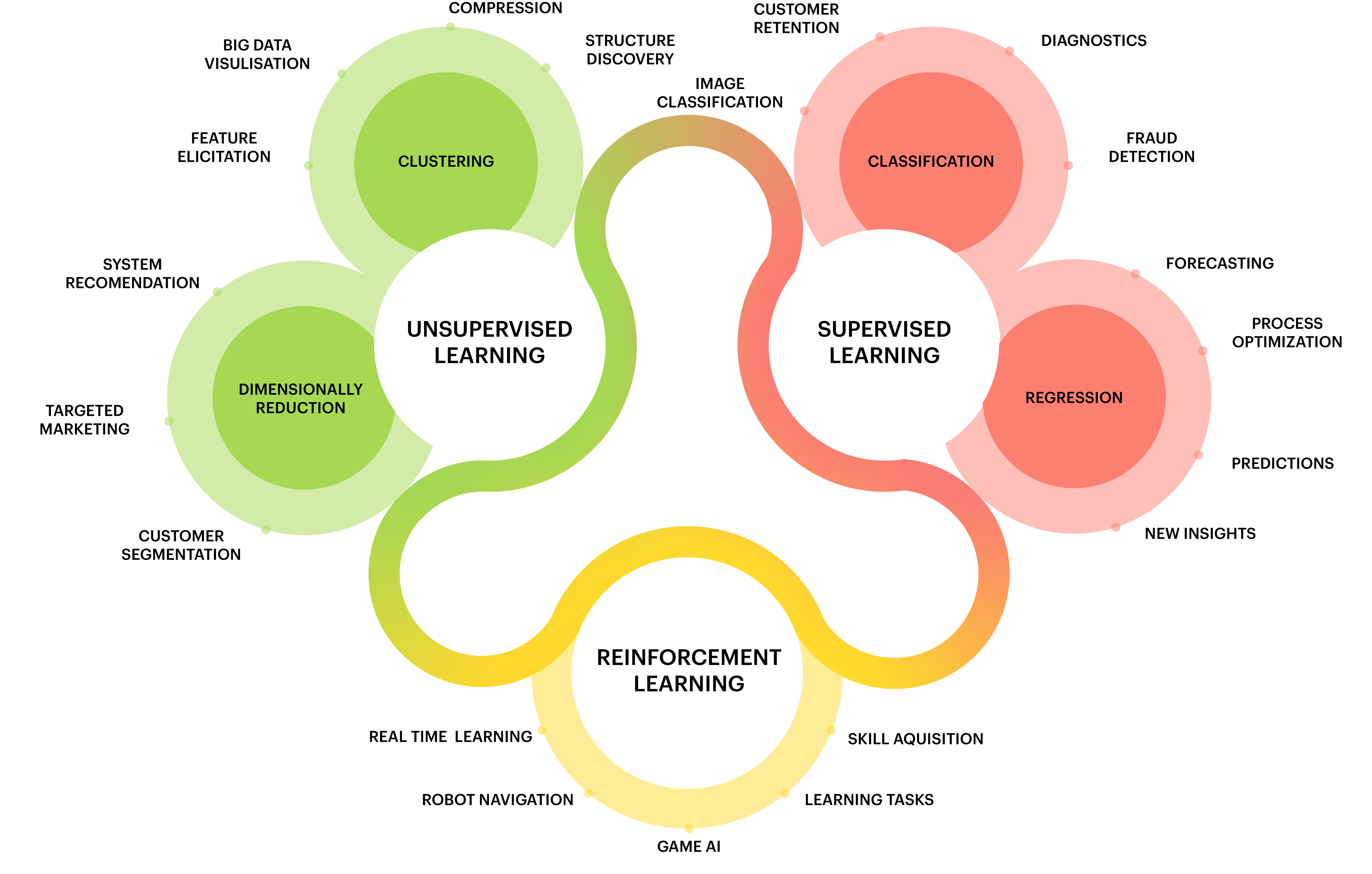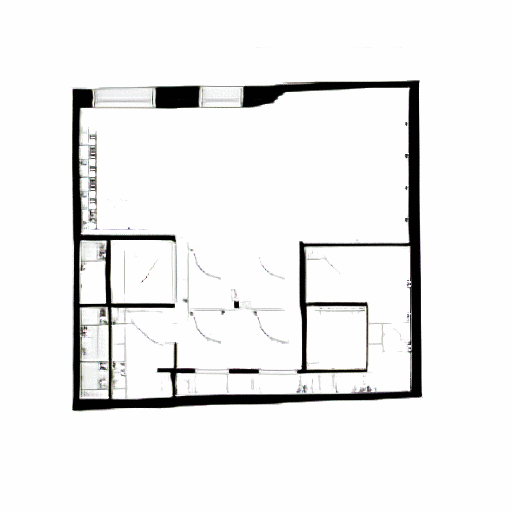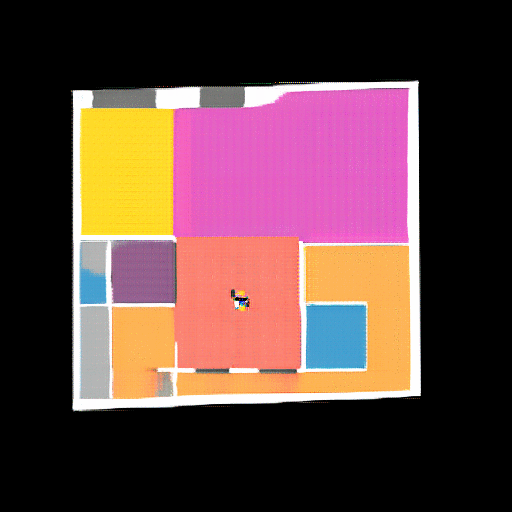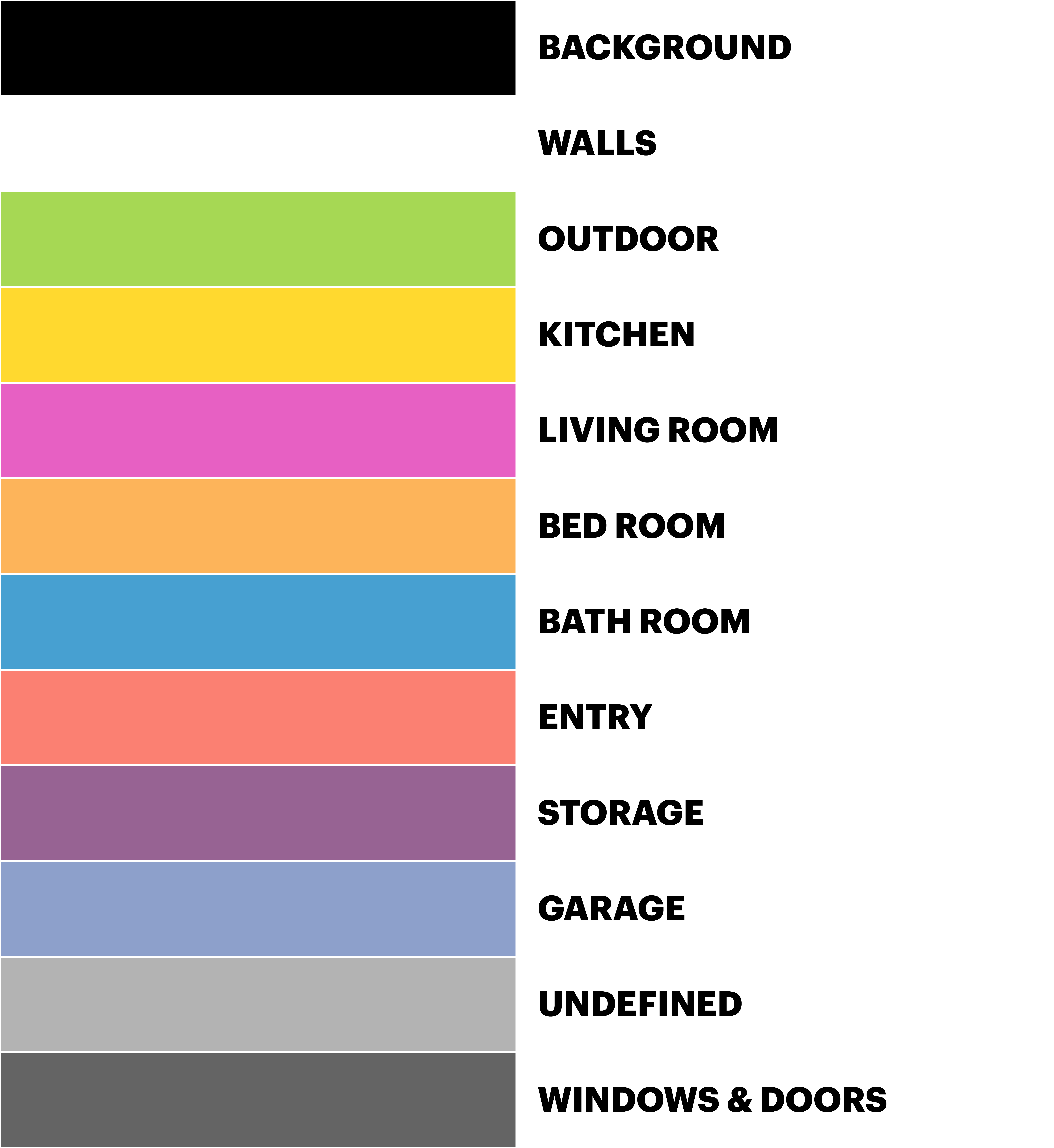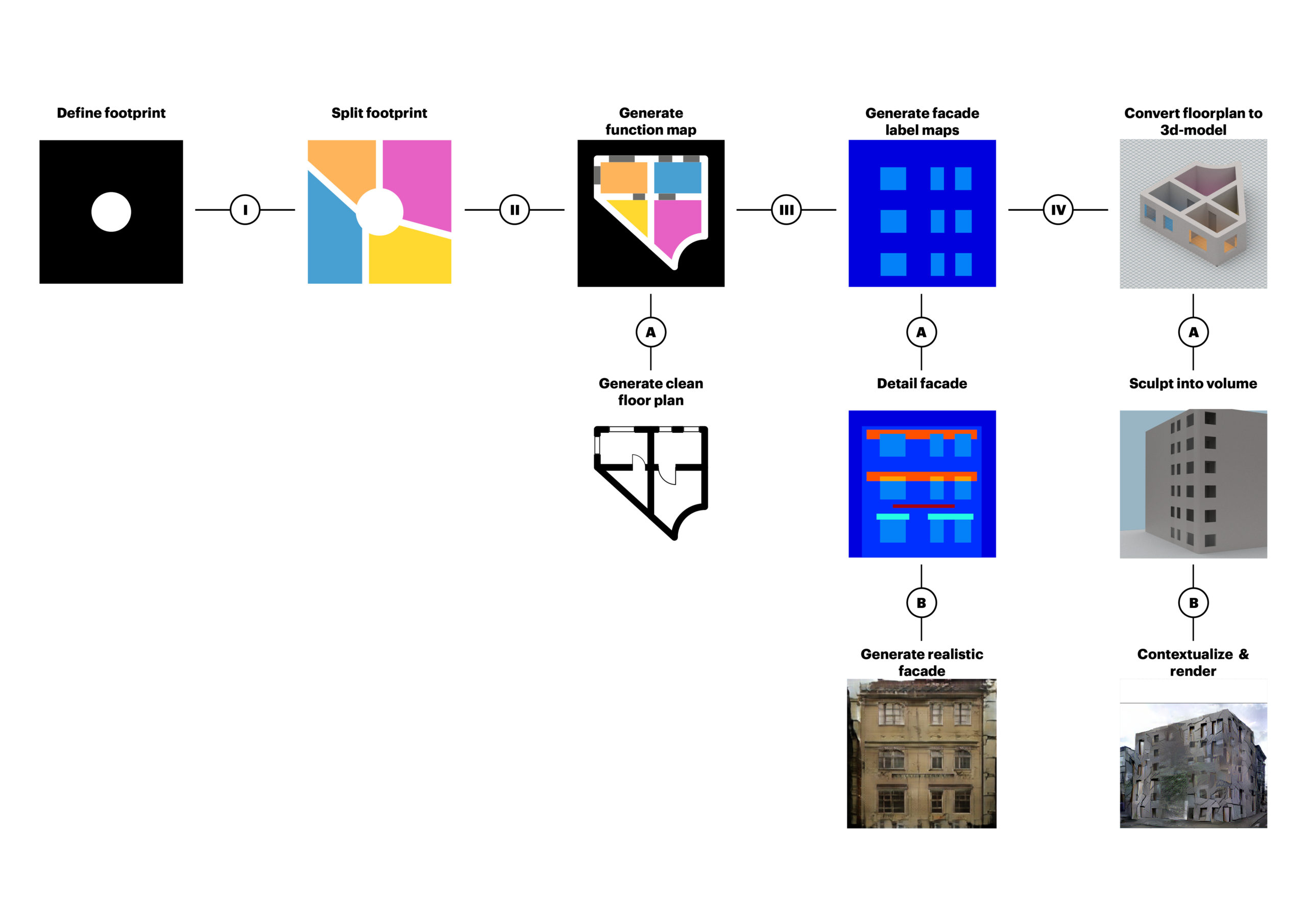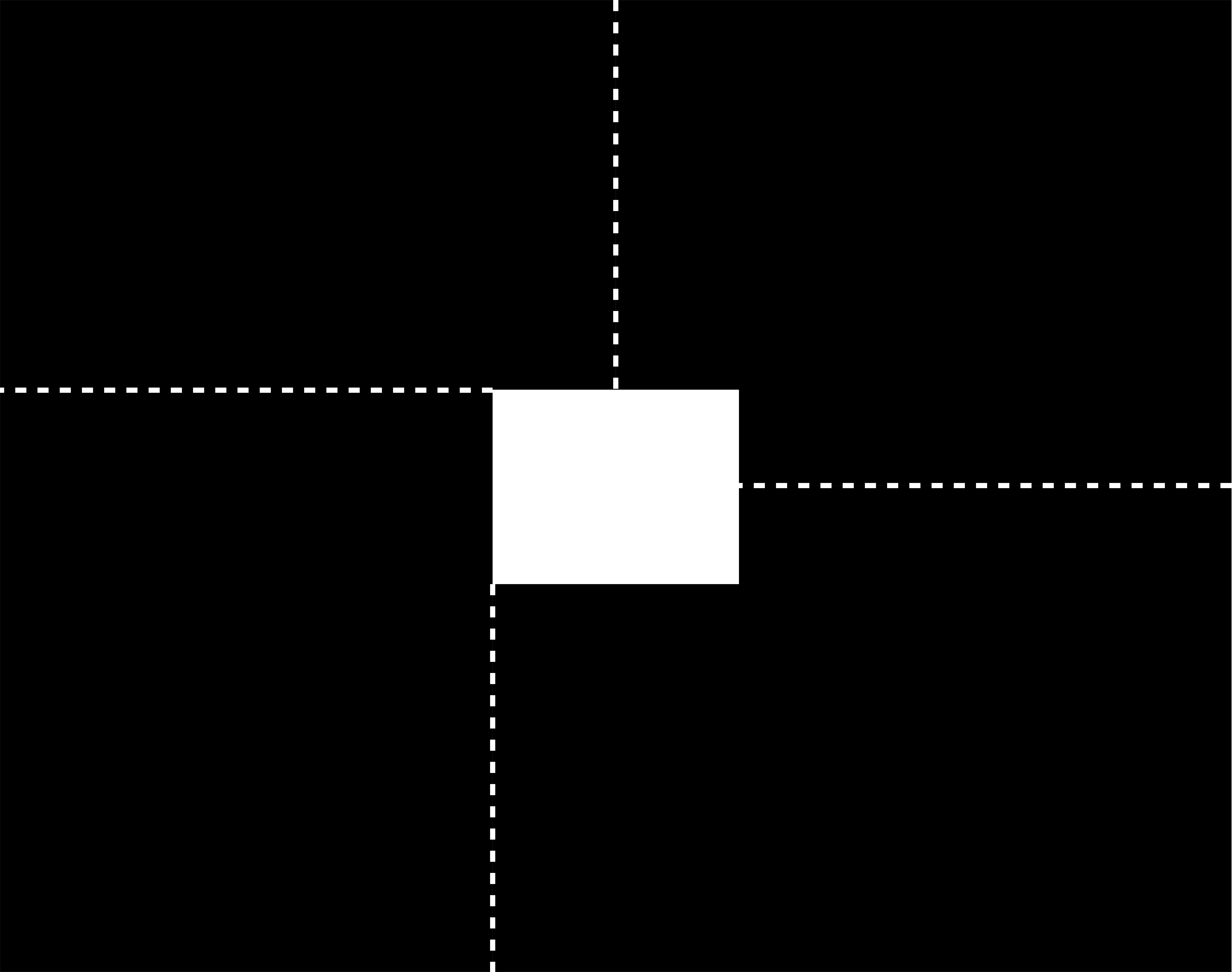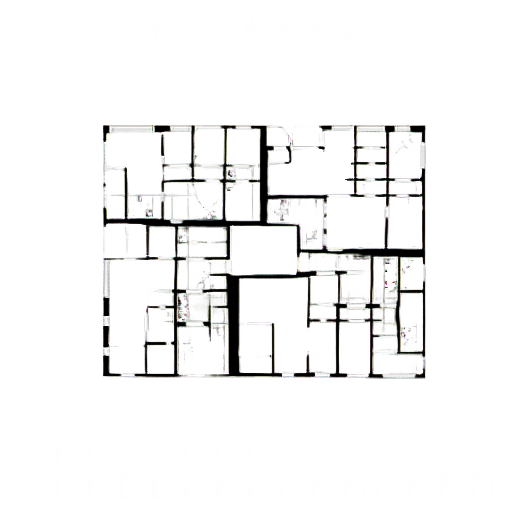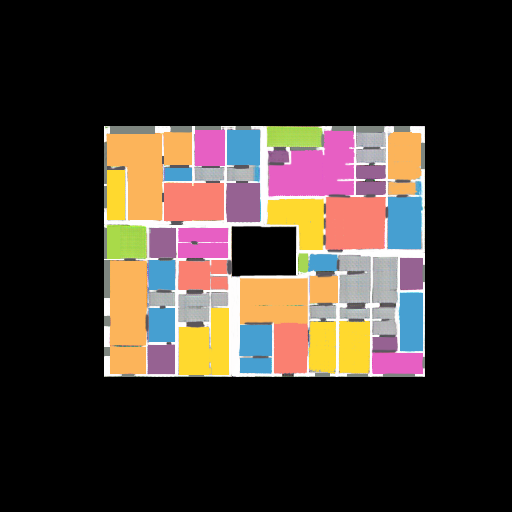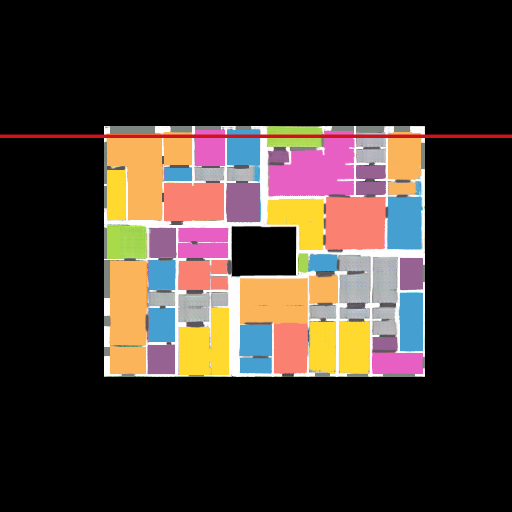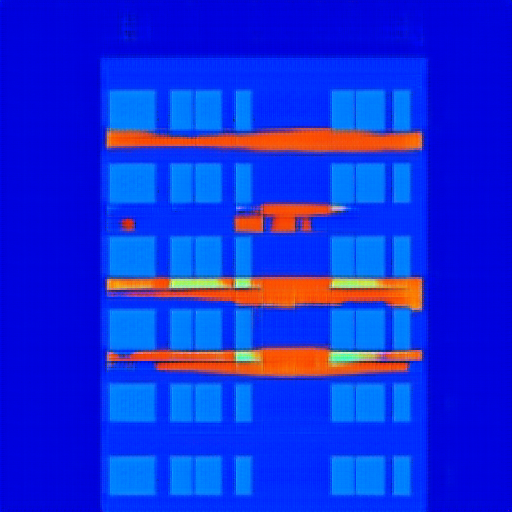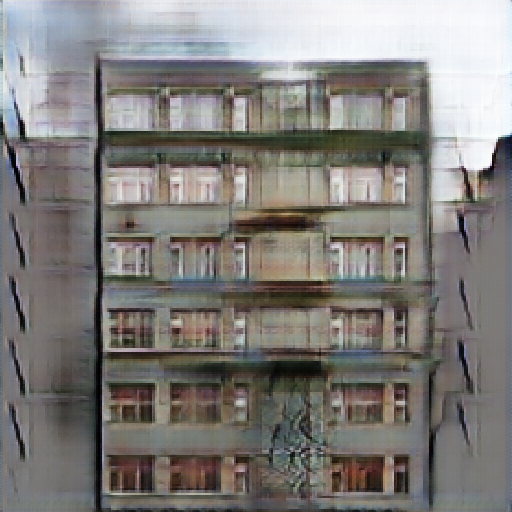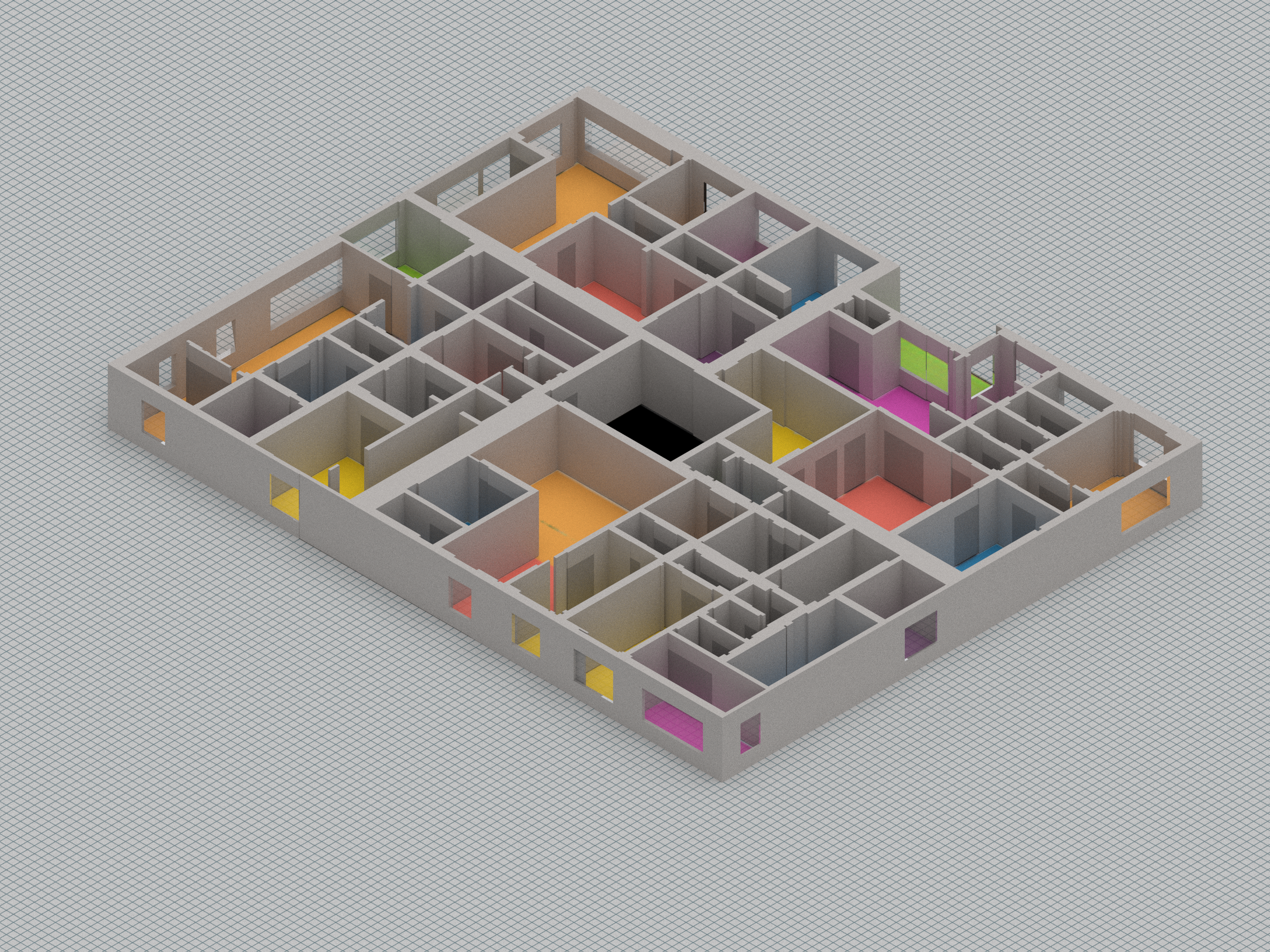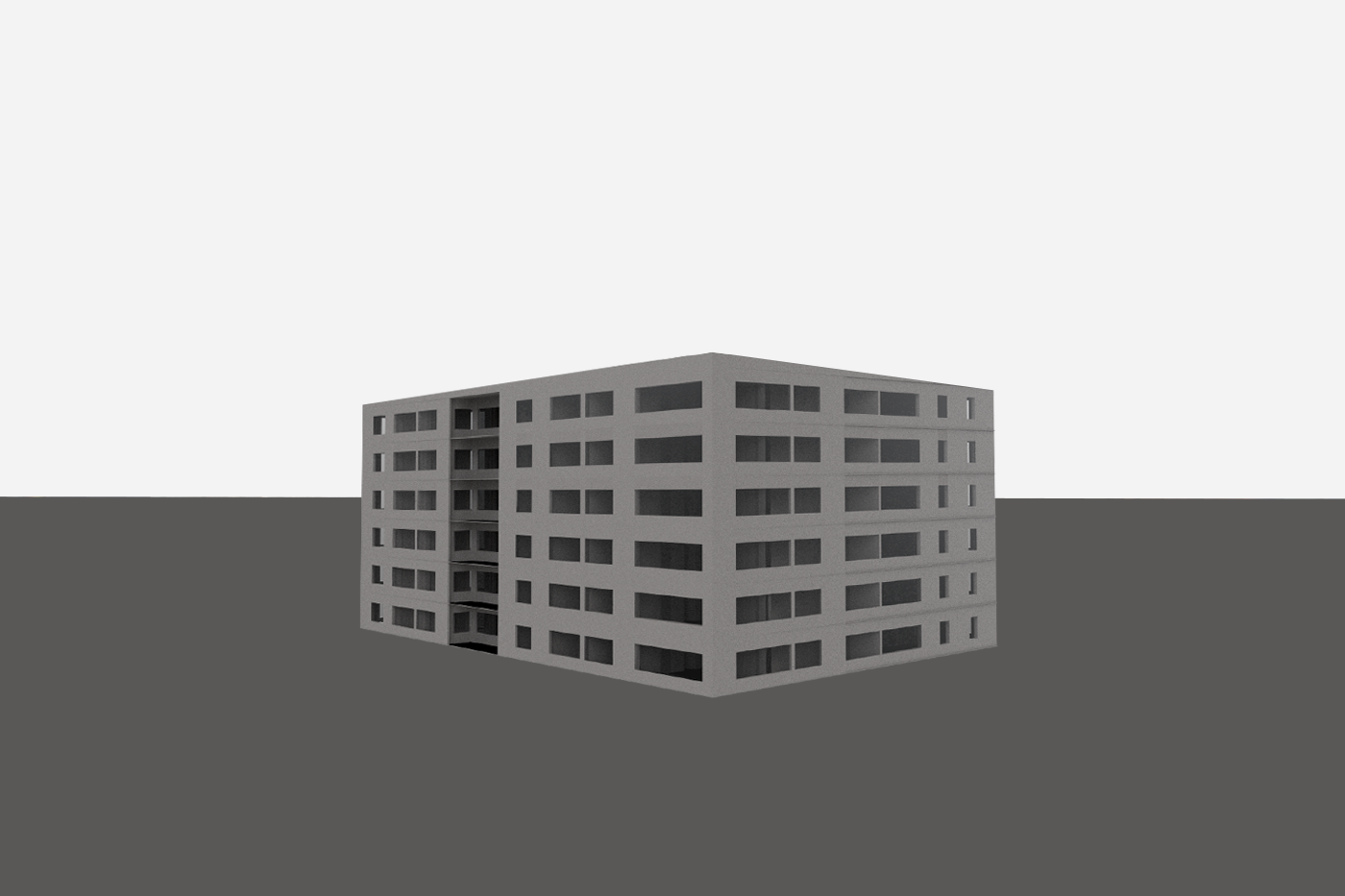Deep architecture
Machine learning and the future of architecture
This thesis explores the use and potential application of machine learning in the field of architecture. It aims to provide a framework for continued research as well as to explore and advance neural networks use in practical and conceptual stages of design processes.
The primary goal was to explore how machine learning could be integrated into existing design processes. Spatial organization served as the first tests of how machine learning could be integrated into an architectural process. Below is an example output of generation of floor plans into an shifting boundary. The network is able to generate both a abstracted drawing of a floor plan with color blocks serving as the main organization tool and a cleaned drawing in a style that is more easy to read.
After the proof of concept above was developed a predicted machine learning workflow was developed, this is built on the same principles but modified and adapted to several new systems. The pipeline is intentionally developed in a similar way to how architectural design processes might be done today as to see how it could be incorporated.

